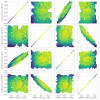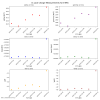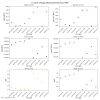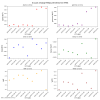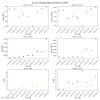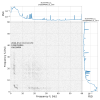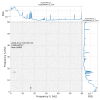J. Kissel We continue to check off ideas on the list trying to answer the question "why did the new DARM loop filtering configuration work in Dec 2023 (LHO:74977), not work in Jan 2024 (LHO:75308), and now works again in Mar 2024 (LHO:76315)?" One of the ideas was that the ESD actuation strength had drifted due to charge accumulation between Dec 2023 and Jan 2024. We suspected this because (1) First, the trend of TST stage actuation strength sweeps from https://ldas-jobs.ligo-wa.caltech.edu/~cal/?report=20240311T214031Z page 13 -- attached here for convenience -- shows the TST stage has an 8% increase in transfer function magnitude since the last validated report Oct 27 2023 (20231027T203619Z). (2) Just before the update to the calibration on Monday 2024-03-11 (LHO:76271), \kappa_TST reported a similar value of 1.08 +/- 0.01. (Remember, \kappa_TST is the time-dependent correction factor that tracks the TST stage actuation strength relative to the last time the calibration was updated.) However, I attach a trend of the following between Dec 2023 and Mar 2024: - The \kappa_TST value, H1:CAL-CS_TDEP_KAPPA_TST_OUTPUT - The ISC_LOCK guardian state number H1:GRD-ISC_LOCK_STATE_N (600 is NOMINAL_LOW_NOISE, 711 is the "new DARM loop filter scheme") - the ESD high voltage driver's analog readback of the ESD bias channel H1:SUS-ETMX_L3_ESDAMON_DC_OUT16 Two things are visible: (a) Due to our regime of flip-flopping the bias from - "positive 1/4 bias" value of 130 [V_ESD] in NOMINAL_LOW_NOISE to - "negative full bias" value of -430 [V_ESD] in PREP_FOR_LOCKING during normal observation run time, the ESD actuation strength did not change between Dec 2023 and Jan 2024. So, this rules out the actuation strength change as a reason for "works in Dec 2023, but not in Jan 2024." (b) My guess is that the ESD actuation strength increased by 8% because we had left the IFO in PREP_FOR_LOCKING from Feb 27 2024 to Mar 08 2024, and then again from Mar 09 to Mar 11, for a total of ~2 weeks time at the "negative full bias." Important to note -- even though \kappa_TST was reset to 1.00 after Monday, Mar 11 2024, update to calibration (or "push" of the most recent measurement of the calibration parameters to CAL-CS / GDS) the ESD actuation strength itself did not change. An 8% increase in ESD actuation strength should still be important to account for in any filter designs of the DARM actuation distribution filtering on ETMX (colloquially referred to as "the cross-overs"), and *now* (in Mar 2024) may result in some differences from when the filters were last designed, or rather on the data the DARM model was based on (from Oct 2023). BUT -- Louis' success in the past two nights may indicate that the Dec 2023 design (that uses data from Oct 2023) is not that sensitive to the 8% ESD actuation strength increase, ruling it out as a reason for why the new DARM filter scheme didn't work in Jan 2024, but worked in Dec 2023 and works now in Mar 2024. One might argue that we should (i) Measure the ESD actuation strength via other methods (i.e. "optical lever" and/or "in-lock" charge measurements, or measuring BSC-ISI ST2 drive coupling to DARM noise) to see if we can corroborate the increase in actuation strength and/or see if it's impacting the IFO. (ii) For now, do as LLO does and "match the IFO to the calibration model" and adjust the *digital* gain of ESD actuation strength to invert the real ESD actuation strength (typically done by adjusting the H1:SUS-ETMX_L3_DRIVEALIGN_L2L_GAIN). (iii) If we find something we don't like in (i), then we should, for a while, operate with *positive* full bias voltage when not in observing. The conversation about which of these to do is on-going.




